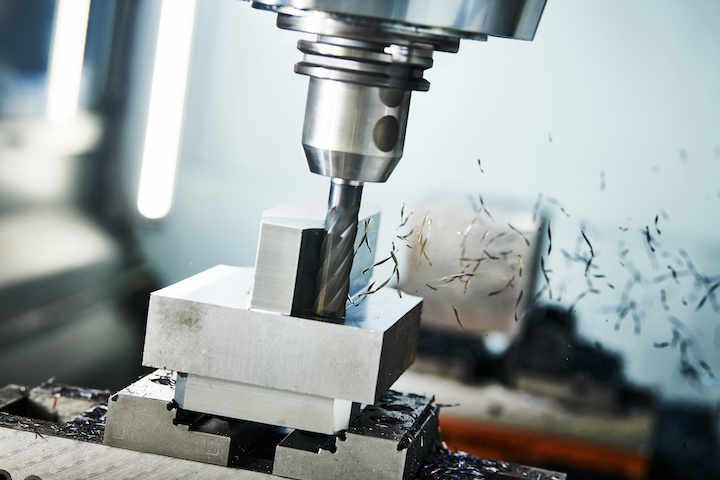Efficient Machining Means Understanding Surface Finishes

When it comes to Design for Manufacturability (DFM), it’s clear that overspecifying certain part features — such as dimensional tolerances, grooves, holes and radii — will drive up your production time and costs. But surface finish can be a different story.
While it’s true designing a part with a finer surface finish than what you need can lead to inefficient, costly CNC machining, more often than not we see the opposite occur.
Know What You’re Looking For In our experience, the surface finish specified on a drawing does not always reflect what a customer wants. For example, a 125-microinch Ra surface finish will appear nice and smooth to the naked eye, while a 250-microinch Ra finish will appear rougher. And whether for aesthetic or functional reasons, we have had customers come back to us after the fact because they want the surface to be smoother.
In other words, although the drawing may indicate 250, what the customer really wants — and expects — is 125 or smoother. This is especially true for part features like water holes. And in many cases, this back-and-forth will drive up production time.
A Balancing Act On the other hand, it’s important to remember that the finer the surface finish, the more labor will be required to achieve it. For this reason, overspecifying finishes can also drive up time and cost. For example, while we can easily hit 125–250 surface finishes with waterjets and CNC milling, achieving smoother surfaces will require more specialized tooling or bench work, translating to significantly higher costs.
For a better idea of what certain surface finishes may look like, check out the following chart. Roughness Average (Ra) and Root Mean Square (RMS) are both common representations of surface roughness, but each one is calculated differently.
| Ra (microinch) | RMS (microinch) | Surface Finish Appearance |
| 250–320 | 275–352 | Visible machining marks with cutter lines that you can feel. |
| 125–200 | 137.5–220 | Visible, but not obvious, machining marks with cutter lines that are much harder to detect. |
| 63–100 | 69.3–110 | Machining marks blur together, but the direction is obvious. |
| 32–50 | 35.2–55 | Directional marks are visible but not obvious. |
| 16–25 | 17.6–27.5 | Directional marks are blurred, and the cutter lines cannot be picked up. |
| 8–12.5 | 8.8–13.75 | Directional marks are not visible — closer to a mirror finish. |
| 4 | 4.4 | Mirror-like finish. |
Work With Your Machinist While it’s important to know what you want in terms of surface finish before working with your machinist, the best machining companies will ensure they deliver what you’re looking for up front. For example, at L&S, we work with our customers during every step of the machining process to avoid under- or over-delivering surface finishes. And as a result, we keep your cost and production time to the minimum.
Be on the lookout for our next blog post, which will continue this series on DFM and delve into our next topic. In the meantime, sign up for our newsletter.